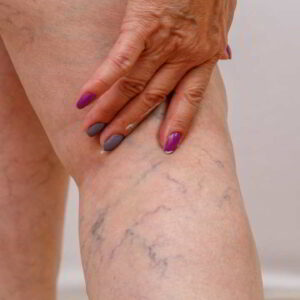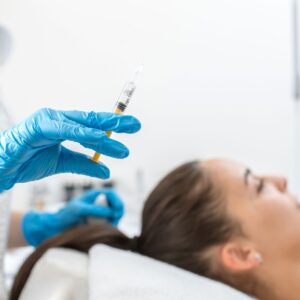Rhinoplasty, often referred to as a “nose job,” is a popular cosmetic procedure aimed at enhancing the shape, size, and overall appearance of the nose. As one of the most intricate facial surgeries, understanding the step-by-step process can help prospective patients feel more prepared and confident about their journey. In this comprehensive guide, we will explore the various stages involved in Rhinoplasty in Abu Dhabi, from initial consultation to final results, ensuring you have a clear understanding of what to expect throughout the process.
The Initial Consultation and Evaluation
Establishing Patient Goals and Expectations
The journey toward a successful rhinoplasty begins with a detailed consultation. During this phase, the surgeon discusses the patient’s aesthetic goals, personal preferences, and concerns regarding their nasal structure. This dialogue helps in setting realistic expectations and understanding the desired outcome. The surgeon evaluates facial symmetry, nasal proportions, skin quality, and overall facial harmony to determine how the nose’s shape complements other facial features.
Physical Examination and Assessment
Following the discussion, a thorough physical examination is conducted. The surgeon assesses the internal and external nasal structures, including cartilage, bone, and skin thickness. This assessment aids in planning the surgical approach and customizing the procedure to the individual’s unique anatomy. Advanced imaging or 3D simulations may be used to visualize potential results, helping patients better understand the anticipated changes.
Preoperative Preparations
Medical History and Diagnostic Tests
In preparation for Rhinoplasty Surgery, a comprehensive medical history review is essential. The surgeon gathers information about previous surgeries, allergies, medication use, and any underlying health conditions. Diagnostic tests, such as blood work or imaging, may be recommended to ensure the patient is fit for surgery and to minimize potential complications.
Patient Instructions and Planning
Patients receive detailed instructions to prepare for the procedure. This includes guidelines on medication adjustments, cessation of smoking, and fasting requirements. The surgeon also discusses anesthesia options and postoperative care plans, ensuring the patient is well-informed and comfortable with the upcoming procedure.
The Surgical Procedure: Step-by-Step Breakdown
Anesthesia Administration
The rhinoplasty procedure can be performed under local anesthesia with sedation or general anesthesia, depending on the complexity of the case and patient preference. The anesthetic ensures comfort and pain-free experience throughout the surgery.
Incision Placement: Open vs. Closed Rhinoplasty
The surgeon chooses between an open or closed approach based on the intended modifications:
- Open Rhinoplasty involves a small incision across the columella (the tissue between the nostrils), providing direct visibility of nasal structures.
- Closed Rhinoplasty uses incisions made inside the nostrils, leaving no visible scars and often resulting in a quicker recovery.
Reshaping and Restructuring
Once access is obtained, the surgeon begins sculpting the nasal framework:
- Bone and Cartilage Modification: Excess or deformed bone and cartilage are carefully removed, added, or reshaped to achieve the desired contour.
- Septal Correction: If necessary, the septum (the cartilage dividing the nostrils) is corrected to improve breathing or appearance.
- Refinement of Nasal Tip and Bridge: Specific attention is given to the nasal tip’s projection, rotation, and the dorsal hump or bridge.
Closing Incisions and Applying Dressings
After the necessary adjustments, the incisions are meticulously closed with fine sutures. A nasal splint and soft dressings are applied to support the new shape, minimize swelling, and protect the nose during initial healing.
Postoperative Care and Recovery
Immediate Post-Surgery Protocol
Following surgery, patients are monitored in a recovery area until anesthesia wears off. Pain management, swelling reduction, and infection prevention are priorities during this phase. Patients are advised to keep their head elevated and avoid strenuous activities to reduce swelling and promote healing.
Managing Swelling and Bruising
Swelling and bruising are common after rhinoplasty but typically subside within a few weeks. Cold compresses, medications, and proper rest facilitate recovery. Patients are advised to avoid blowing their nose or engaging in activities that could disrupt the healing process.
Follow-Up Appointments
Regular follow-up visits are scheduled to monitor healing progress, remove sutures if necessary, and address any concerns. These appointments are crucial for ensuring optimal results and early detection of potential issues.
Long-Term Results and Maintenance
Final Results and Timeline
While initial postoperative swelling may diminish within weeks, the full results of rhinoplasty can take up to a year to become apparent as tissues settle and scars mature. Patients can expect a more harmonious facial appearance, improved nasal function, and enhanced self-confidence.
Tips for Maintaining Results
Maintaining a healthy lifestyle, protecting the nose from trauma, and following surgeon recommendations contribute to the longevity of the results. It’s important to have realistic expectations and understand that subtle changes may continue over time.
Additional Considerations
Customizing Your Rhinoplasty Experience
Every rhinoplasty case is unique. Surgeons tailor techniques based on individual anatomy and aesthetic goals. Whether it’s refinement of the nasal tip, correction of asymmetries, or addressing functional concerns, personalized planning ensures the best possible outcome.
The Role of Technology in Rhinoplasty
Advancements in imaging and surgical tools have enhanced precision and predictability. 3D simulations allow patients to visualize potential results, aiding in decision-making and satisfaction.
Conclusion
Understanding the steps involved in Rhinoplasty Abu Dhabi empowers patients to approach their procedure with confidence and clarity. From the initial consultation through postoperative recovery, each phase plays a vital role in achieving harmonious and natural-looking results. With meticulous planning, skilled surgical execution, and dedicated aftercare, rhinoplasty can significantly enhance facial aesthetics and boost self-esteem.






